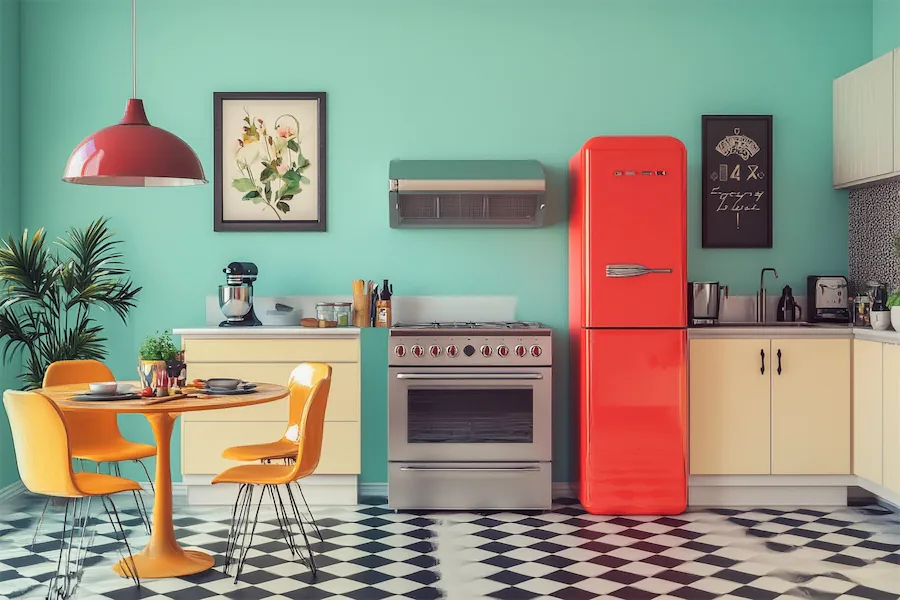A retro kitchen captures the charm and nostalgia of past decades, blending vintage aesthetics with modern functionality. This article explores the history, key features, applications, and considerations when designing a retro kitchen.
Introduction to Retro Kitchens
Retro kitchens draw inspiration from design trends of the mid-20th century, particularly the 1950s through the 1970s. They are characterized by bold color schemes, distinctive patterns, and vintage appliances, creating a lively and nostalgic atmosphere. Incorporating retro elements can infuse a sense of personality and warmth into your kitchen space.
History and Origins of Retro Kitchens
The term “retro” refers to styles that are consciously derivative or imitative of trends from the recent past. In kitchen design, retro often encompasses the vibrant and innovative designs that emerged in the post-World War II era, a time marked by optimism and a fascination with futuristic aesthetics. This period saw the introduction of new materials like Formica and vinyl, as well as the popularization of bold color palettes and streamlined appliances.
Key Features of Retro Kitchens
Retro kitchens are distinguished by several hallmark features:
- Bold Color Schemes: Utilization of vibrant hues such as turquoise, red, yellow, and pastel shades, often combined in contrasting patterns.
- Vintage Appliances: Incorporation of retro-style appliances, either restored originals or modern reproductions, to enhance the nostalgic ambiance.
- Checkerboard Flooring: Classic black-and-white or colored checkerboard patterns add a distinctive retro flair to the kitchen floor.
- Patterned Backsplashes: Use of geometric or floral tiles to create eye-catching backsplash designs that reflect mid-century aesthetics.
- Open Shelving with Vintage Decor: Display of period-appropriate dishware, collectibles, and accessories on open shelves to reinforce the retro theme.
Applications of Retro Kitchens
The versatility of retro kitchen designs allows them to be adapted to various settings:
- Complete Retro Overhaul: Transforming the entire kitchen space to reflect a specific decade, creating an immersive nostalgic experience.
- Modern-Retro Fusion: Blending retro elements with contemporary design features to achieve a balanced and eclectic aesthetic.
- Accent Features: Incorporating select retro components, such as a vintage refrigerator or patterned tiles, into an otherwise modern kitchen to add character and interest.
Considerations When Choosing a Retro Kitchen
When planning a retro kitchen, consider the following:
- Cohesion: Ensure that the chosen retro elements harmonize with the overall design of your home to create a unified aesthetic.
- Functionality: While vintage appliances and fixtures add charm, it’s important to assess their practicality and efficiency for daily use.
- Personal Expression: Select retro features that resonate with your personal style and preferences, making the space uniquely yours.
Conclusion
Retro kitchens offer a delightful blend of nostalgia and functionality, allowing homeowners to create spaces that are both charming and practical. By understanding their history, key features, and applications, you can design a kitchen that reflects the timeless appeal of retro aesthetics.
